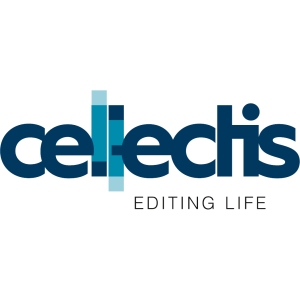Cellectis S.A.
The information included in this report on Form 6-K under the caption
“—BALLI-01 Study” below shall be deemed to be incorporated by reference in the registration statements of Cellectis S.A. (collectively, the “Registration Statements”) on Form F-3 (No. 333-288491 and 333-284302) and Form S-8 (Nos.
333-204205, 333-214884, 333-222482, 333-227717,
333-258514, 333-267760, 333-273777, 333-284301 and
333-290218), to the extent not superseded by documents or reports subsequently filed.
The information under the
caption “Investors R&D Day” as well as the information included as “Exhibits” to this Form 6-K shall not be deemed incorporated by reference in any filing of Cellectis S.A. under
the Securities Act of 1933 or under the Exchange Act of 1934, except as shall be expressly set forth by specific reference in such a filing.
Investors R&D Day
Cellectis S.A. (the
“Company”) hosted an Investors R&D Day on October 16, 2025. In connection with the R&D Day, the Company issued a press release, attached as Exhibit 99.1 hereto. Attached as Exhibit 99.2 hereto is a copy of the presentation
deck that accompanied the Investors R&D Day.
BALLI-01 Study
Highlights:
| |
• |
|
Efficacy: ORR of 68% with lasme-cel Process 2 (n=22), 83% at RP2D (n=12) and 100% in the target Phase 2
population (n=9) |
| |
• |
|
Safety: in Phase 1 (n=40), lasme-cel was generally well-tolerated (including 1 case of grade 2 IEC-HS which
resolved) |
| |
• |
|
Durability: in patients who achieved MRD-negative CR/CRi, median OS was 14.8 months |
| |
• |
|
In the target Phase 2 population, CR/CRi rate of 56% with ~80% of patients achieving MRD-negative status
|
| |
• |
|
In the target Phase 2 population, 100% patients became transplant eligible with 78% proceeding to transplant
|
| |
• |
|
Among 11 subjectspatients previously treated with all 3 targeted therapies (inotuzumab, blinatumomab, and CD19
CAR-T), 8 responded and 7 achieved MRD-negative status |
| |
• |
|
BALLI-01 pivotal Phase 2 in r/r B-ALL initiated |
On October 16, 2025, the Company released promising clinical data from the BALLI-01 Phase 1 study of lasme-cel (UCART22) for transplant ineligible patients with relapsed/refractory B-cell acute lymphoblastic leukemia (r/r B-ALL) in the
third line or beyond (3L+).
The BALLI-01 Phase 1 clinical study was designed to evaluate the safety and clinical
activity of lasme-cel (UCART22) in patients with r/r B-ALL. The BALLI-01 trial enrolled 40 patients aged 15–70 years
expressing >70% CD22 on leukemic blasts. Patients were heavily pretreated with a median of 4 prior lines of therapy: 80% of patients had received prior blinatumomab, approximately half had received prior inotuzumab and prior CD19 autologous CAR-T therapy.
Lasme-cel (UCART22) was given at escalating dose levels
following lymphodepletion with either fludarabine and cyclophosphamide (FC) or FC with alemtuzumab (FCA). The addition of alemtuzumab was implemented to sustain host T-cell and Natural Killer (NK)-cell
depletion and to support lasme-cel expansion and persistence.
Phase 1 Safety Data: The Phase 1 safety data
confirm that lasme-cel was generally well-tolerated, with expectations for CAR-T therapies, with manageable adverse events, including cytokine release syndrome (CRS) and
immune effector cell–associated neurotoxicity syndrome (ICANS).
| |
• |
|
Dose-limiting toxicities (DLTs) were uncommon, with only 1 case reported at Dose Level 3 (DL3)
|
| |
• |
|
Adverse event of special interest (AESI) of CRS occurred in 2.5% of patients and ICANS in 5% of patients
|
| |
• |
|
8 lasme-cel related serious adverse events (SAEs) were reported
|
Phase 1 Activity Data: In the BALLI-01 Phase 1 study, 40 transplant ineligible 3L+
patients were dosed with lasme-cel (UCART22):18 patients were dosed with product manufactured by an external CDMO (Process 1, or P1) and 22 patients were dosed with Cellectis-manufactured product (Process 2,
or P2). In this dataset, P2 was associated with higher response rate than P1:
| |
• |
|
Complete Remission (CR) / Complete Remission with complete hematologic Recovery (CRi) rate: 18% for P1 vs 36% for
P2 |
At Dose Level 3, Process 2 (DL3), the recommended Phase 2 dose (RP2D), 12 patients were dosed (n=12):
| |
• |
|
The CR/CRi rate was 42%, with 80% of these responders achieving
MRD-negative status |







